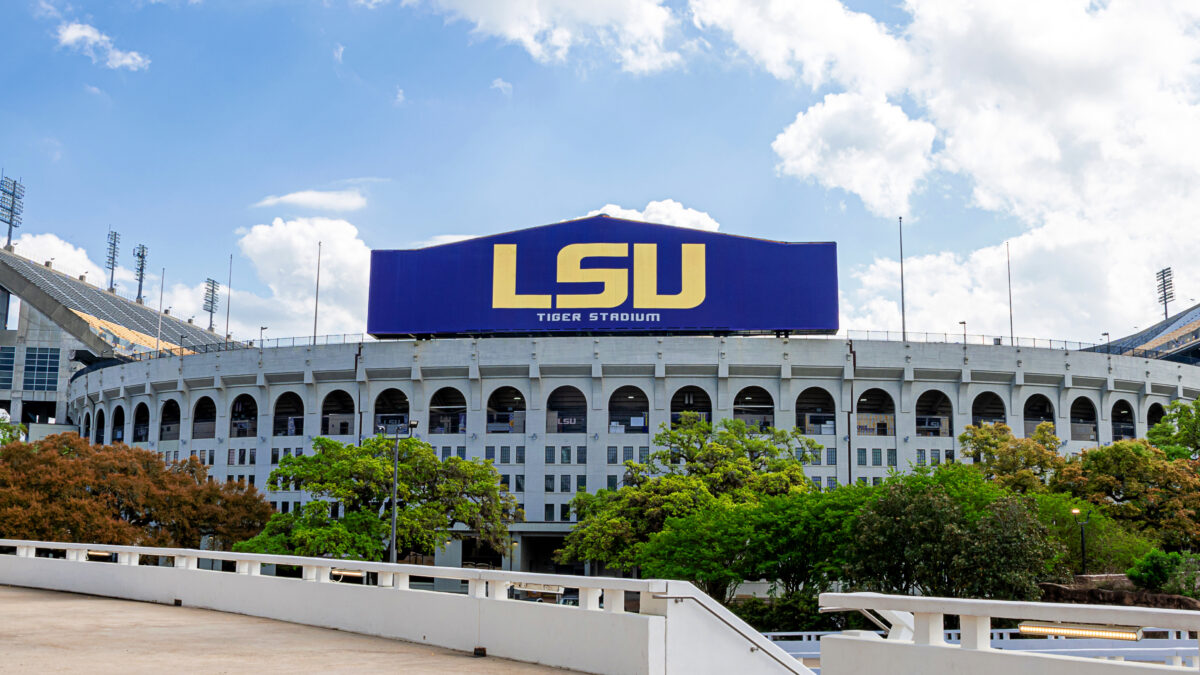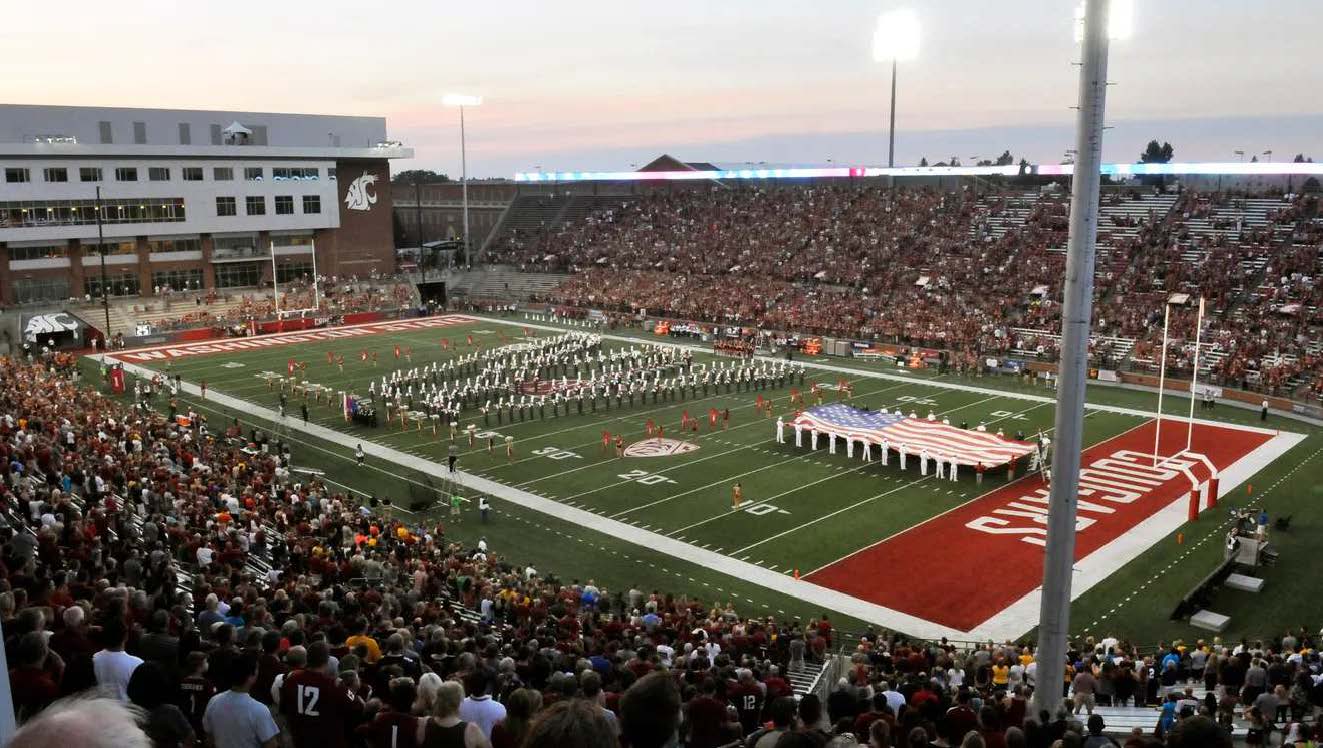
Blog Article
LSU’s Tiger Stadium: A Century of Gridiron Glory
Few venues can match the storied legacy of Louisiana State University’s Tiger Stadium in the annals of college football history. For nearly a century, this hallowed ground has been the stage for some of the sport’s most electrifying moments, a colosseum of the South that has witnessed the rise and fall of football dynasties.
A Monument to American Ingenuity
The year was 1924. Calvin Coolidge was president, George Gershwin’s “Rhapsody in Blue” premiered, and in Baton Rouge, a modest 12,000-seat stadium known as “State Field” rose from the earth. Little did anyone know that this humble beginning would evolve into one of college football’s most iconic landmarks.
But the true stroke of genius came during the Great Depression, a time when American resourcefulness was put to the test. In the 1930s, as the nation grappled with economic turmoil, Louisiana’s larger-than-life Governor Huey P. Long and LSU’s crafty athletics manager Thomas “Skipper” Heard concocted a plan that epitomized the era’s “make do and mend” spirit.
The Dormitory Stadium: A Depression-Era Masterstroke

Their audacious idea? Transform the stadium into a dual-purpose structure by building dormitories underneath the seats. This brilliant (or mad, depending on your perspective) scheme solved two pressing issues: the need for expanded student housing and the desire for a larger football venue. It was a uniquely American solution, born from necessity and fueled by ambition.
This wasn’t just a minor addition. At its peak, these dorms could house up to 1,500 students. Imagine the scene: young scholars poring over their textbooks, their desks vibrating with the thunderous cheers from the game above. These students had the ultimate front-row seat on Saturdays in college football history.
The dorms remained in use until the 1960s and even saw a brief revival in the 1980s. Today, while no longer housing students, this unique feature of Tiger Stadium’s architecture lives on. The 528 windows that once looked into student rooms are part of the stadium’s distinctive external appearance, a visual reminder of its dual purpose in LSU’s history.
This innovative design served multiple purposes. First and foremost, it addressed a pressing need for student housing during economically challenging times. Beyond that, it created an unprecedented symbiosis between the academic and athletic aspects of university life.
The dormitory stadium wasn’t just a clever use of space but a statement. It declared that athletics and academics weren’t separate entities but intertwined facets of the college experience at LSU. Students didn’t just attend games; they lived and breathed football.
This unique feature of Tiger Stadium also contributed to its intimidating atmosphere. The dorms added height and mass to the stadium’s structure, making it loom even larger over visiting teams. On game days, with students pouring out of their rooms and into the stands, it ensured a home-field advantage like no other.
From Depression-Era Innovation to Modern-Day Colossus
As the decades passed, Tiger Stadium grew with LSU’s football aspirations and the sport’s burgeoning popularity. Each expansion was a chapter in the stadium’s evolving story:
- 1931: The first night game set the stage for LSU’s fearsome nocturnal reputation.
- 1936: The north end zone addition created the iconic horseshoe shape, boosting capacity to 46,000.
- 1953: The bowl was completed with the south end zone, pushing attendance to 67,720.
- 1978: The west upper deck rose, accommodating 78,000 passionate fans.
- 2000: The east upper deck brought capacity to a staggering 91,600.
Today, standing at 102,321 seats, Tiger Stadium is a testament to the enduring appeal of college football and the unwavering support of the LSU faithful. It’s more than just a sports venue; it’s a living, breathing monument to over 95 years of athletic tradition.
Where Time-Honored Traditions Meet Modern Glory
What sets Tiger Stadium apart isn’t just its imposing structure or massive capacity. It’s the rich tapestry of traditions woven into its very fabric over the decades.
Take, for instance, the “H” style goalposts – a rarity in modern stadiums. These aren’t just functional equipment; they’re a portal to the past, allowing the team to continue the time-honored tradition of running through the goalposts as they enter the field.
Or consider the crossbar mounted above the locker room door, a relic from the goalposts that stood sentinel in the north end zone from 1955 to 1984. Painted with the simple yet powerful exhortation “WIN!”, players touch it as they head onto the field – a tactile connection to generations of Tigers who came before.
Even the field itself tells a story. Unlike most gridirons, Tiger Stadium marks the “5” yard lines, a subtle nod to its unique history and an extra guide for players who’ve called this field home for nearly a century.
Night Falls, Legends Rise
But perhaps no tradition looms larger in Tiger Stadium lore than the night game. Since that first evening contest in 1931, LSU has turned playing under the lights into an art form. The statistics tell the tale: since 1960, LSU’s winning percentage has skyrocketed from a respectable .419 during day games to an eye-popping .745 at night.
This isn’t just home-field advantage; it’s practically football alchemy. As twilight descends on Baton Rouge, Tiger Stadium transforms. The already daunting structure seems to grow, casting long shadows across the field. The crowd, marinated in hours of tailgating and anticipation, reaches a fever pitch. In these twilight hours, Tiger Stadium truly becomes “Death Valley” – a place where opponents’ hopes go to die.
Echoes of Greatness
Every historic stadium has its legendary moments, but Tiger Stadium’s have shaken the earth. On October 8, 1988, the “Earthquake Game” against Auburn saw the crowd’s reaction to a game-winning touchdown register on a campus seismograph. It’s not every day that a football game is measured on the Richter scale.
But perhaps the most iconic moment came on Halloween night in 1959. Billy Cannon’s 89-yard punt return against Ole Miss didn’t just win a game; it became the stuff of Louisiana legend. The crowd’s roar was so intense that local residents feared some calamity had befallen the city. In reality, it was just another Saturday night in Death Valley.
These moments, and countless others like them, have turned Tiger Stadium into more than just a venue. It’s a cathedral of college football, where the ghosts of gridiron past mingle with the stars of today and tomorrow.

The Ultimate Test for Any Coach
For visiting coaches, Tiger Stadium represents the Everest of college football challenges. It’s a crucible that has broken many and forged the legends of a select few. The late great Paul “Bear” Bryant, a man who knew something about hostile environments, once declared, “Baton Rouge happens to be the worst place in the world to be a visiting team.”
As modern amenities like luxury skyboxes are carefully integrated into its historic confines, Tiger Stadium continues to evolve. But at its core, it remains what it has always been: a monument to the passion, tradition, and sheer spectacle of college football.
Tiger Stadium has been a colossus of the college football world for nearly a century. It’s more than just concrete and steel; it’s a living, breathing testament to the enduring power of sport to unite, inspire, and create moments of pure, unadulterated magic. In an era of cookie-cutter stadiums and corporate naming rights, Death Valley stands apart—a place where history is not just remembered but continually made.
The dormitory stadium’s legacy lives on in LSU lore. It’s a testament to the resourcefulness of Depression-era planners, the passion of LSU football fans, and the deep connections between all aspects of college life. While modern students may not be able to claim that they sleep under the stands, they’re still part of a tradition that once saw Tiger Stadium serve as both a colosseum of sport and a home away from home for thousands of Tigers.
Welcome to Tiger Stadium, where football dreams and nightmares have collided spectacularly for almost 100 years. May the next century be just as glorious.









